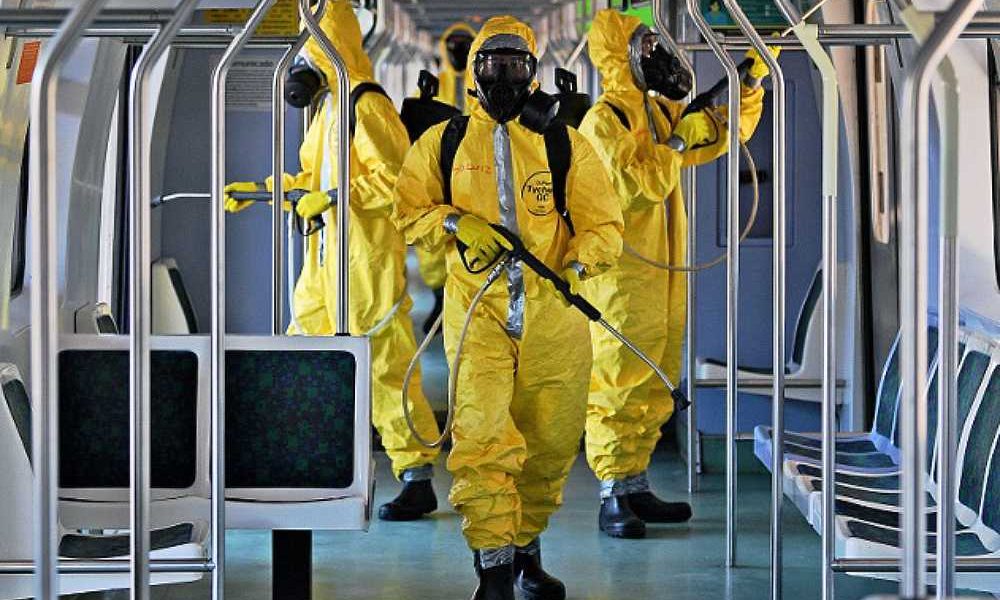Keeping environments well sanitized is always very important, especially in times of pandemic. This is known as the disinfection process.
Proper hygiene of public environments such as hospitals, restaurants and hotels has always been of great importance. But now, with the Covid-19 pandemic that the entire world is experiencing, thinking about cleaning and disinfection has become much more urgent and necessary. Therefore, the National Health Surveillance Agency (Anvisa) has infection control standards that can be followed when cleaning environments.
However, no matter how clean a place appears to be, there can often be dangers that cannot be seen with the naked eye. Disease-transmitting viruses and bacteria can survive on surfaces when adequate hygiene is not carried out. Hepatitis A, rotavirus, salmonella, conjunctivitis, gastroenteritis, bronchiolitis and coronavirus are some of the diseases that can be easily transmitted in these cases.
Therefore, in addition to cleaning and disinfecting environments, hand hygiene is also essential to prevent these diseases and infections. This cleaning can be done using running water and bactericidal soap, alcohol gel and antiseptic. This is because hands are the main means of contaminating microorganisms from one person to another.
In the current context, not only cleaning but also adopting disinfection measures is very important to maintain the safety of individuals. But do you know the difference between cleaning, sterilization and disinfection? We brought the explanation to help you better understand the role of each of these processes and how they are carried out. See below.
Cleaning or sanitizing
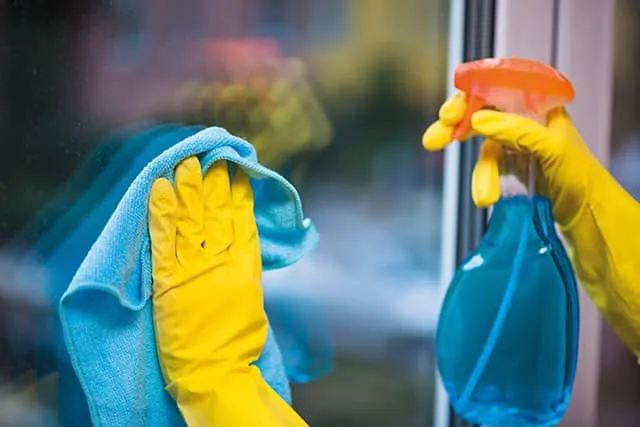
Cleaning or sanitizing, a term that gives greater scope to the process, is the first step in removing dirt. It is what removes the waste that we can see, reducing the microbial load in the area. It can be done with machines, which use water, soap and chemicals. Or it can be done manually, also using soap and water, chemicals and appropriate brushes.
It is very important to know the quality of the products that will be used so that the work of cleaning the environments is not in vain. This is because if organic residues such as blood, secretions and tissue fragments are not removed correctly, they can impede the sterilization and disinfection processes. Therefore, descaling products are recommended to remove organic substances from surfaces.
At the end of cleaning, the materials used to sanitize the environment must be rinsed with plenty of water or with a clean cloth, in the case of dry cleaning. Furthermore, there may also be a need to sterilize these materials. Careful observation is also recommended to ensure that cleaning was carried out correctly.
Sterilization
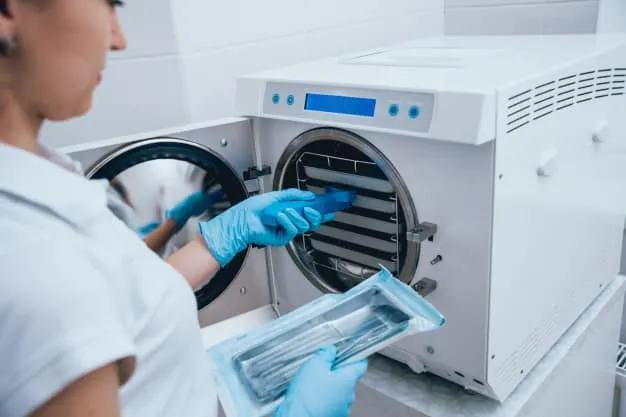
Sterilization is the method capable of destroying all microbial life forms, such as bacteria, fungi, viruses and spores, using chemical, physical and physicochemical agents. However, in this type of process, it is necessary to evaluate the nature of each material to know if it is resistant to the heat, steam and pressure used in sterilization. Therefore, the ways in which the three types of sterilants can be used are:
- Physicists: autoclaves, ovens, pasteurizers, ultraviolet radiation, Gamma rays, buckling.
- Chemicals: aldehydes and peracetic acid, used in the reprocessing of dialyzers and endoscopes.
- Physical-chemical: ethylene oxide sterilizers and hydrogen peroxide plasma.
Disinfection
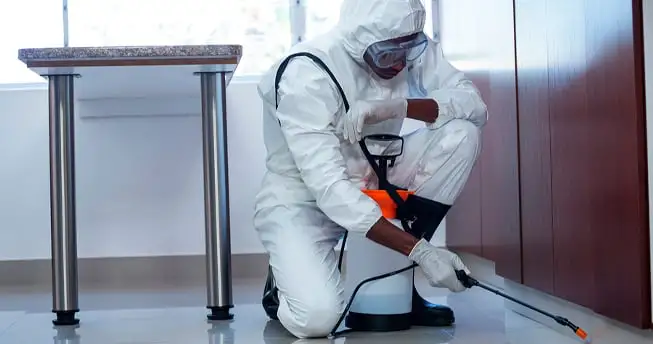
Disinfection is the process that lies between the hygiene and sterilization processes. This method manages to eliminate all particles of microorganisms present on surfaces, except bacterial spores. Therefore, it is this method that guarantees the protection of the environment, preventing the uncontrolled proliferation of germs and microorganisms impregnated in the location. However, there are some factors that can interfere with the effectiveness of disinfection, including:
- Poorly executed previous cleaning
- Ineffective disinfectant solution as incorrectly diluted
- Insufficient exposure time to germicides
- Process temperature and pH
Disinfection levels
The disinfection process can be classified into five different levels:
- Low level: Some viruses, bacteria in vegetative form and fungi are destroyed. But bacterial spores and viruses such as hepatitis-B and tuberculosis can survive. The products used at this level are Peracetic Acid, Sodium Hypochlorite, Ethyl, N-Propyl and Isopropyl Alcohol and Quaternary Ammonia.
- Medium level: This level manages to destroy everything that the low level can, but here the hepatitis-B and tuberculosis viruses are also eliminated. However, slow viruses and bacterial spores can survive. At this level, the solutions used are Surfa’Safe, Ethyl Alcohol (70º) and Isopropyl (92º), Sodium Hypochlorite, Phenolics and Iodophores and Quaternary Ammonium.
- High level: At this level, viruses, fungi, bacteria and some spores are destroyed. Slow viruses and some types of spores can resist disinfection. The products used are Sodium Hypochlorite, Glutaraldehyde, Hydrogen Peroxide Solution, Chlorine and Chlorinated Compounds, Peracetic Acid, Orthophthalaldehyde, Superoxidized Water.
- Mister: This type of disinfection is used by some equipment such as dishwashers and clothes washers, which are heated to temperatures of 60° to 90°C.
- Undefined: this level covers activities such as ironing (applying dry heat), boiling water for 30 minutes, formaldehyde tablets. Therefore, the level depends on the concentration of germicides and the temperature applied.
Disinfection methods
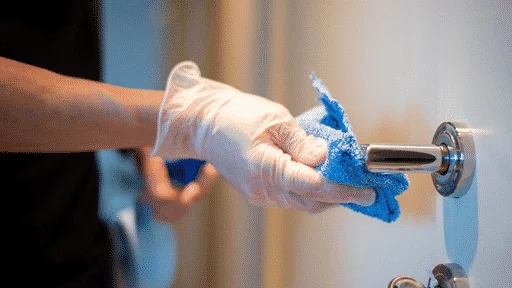
There are two disinfection methods: physical and chemical disinfection. Find out more below.
Physical disinfection
This disinfection method involves heat and a disinfectant agent and is the first option for hospital hygiene. In addition, equipment such as flush washers, thermo-disinfector washers and pasteurizers are also used. However, special care is required with the equipment that will be disinfected, as they may not withstand high temperatures.
The main advantages of the physical disinfection method are:
- low operational risk;
- ability to eliminate;
- minimizing errors;
- possibility of monitoring, standardizing and recording processes;
- high level disinfection.
Chemical disinfection
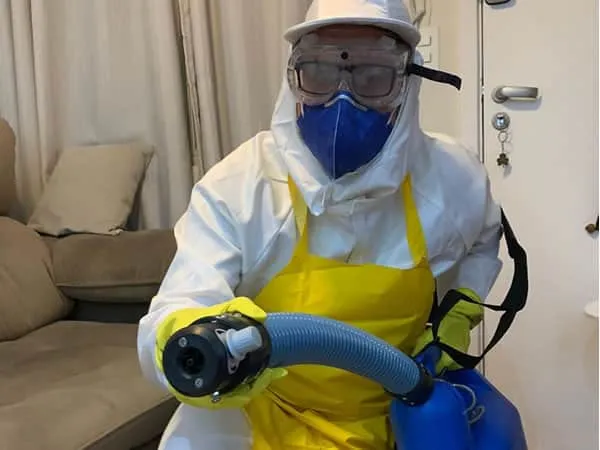
This type of disinfection is more complex than physical disinfection and demands more attention from those who will apply it. This is because chemicals must be handled with great care to be effective and not contaminate anyone who comes into contact with the environment.
This method is best suited for environments and surfaces that physical disinfection cannot reach, making it the best alternative. Therefore, some factors need to be considered such as the amount of microorganisms, the surface to be cleaned, the PH of the solution and the water used for dilution.
Importance of disinfecting
In addition to reducing the proliferation of microorganisms, disinfection can also bring other benefits. Research has shown that this process can reduce the risk of coronavirus contamination by up to 99.9%. Therefore, disinfection is a highly recommended procedure to prevent and reduce the chances of contamination.
Furthermore, as disinfected environments become safer, this contributes to the mental well-being of people who frequent these places, such as employees of companies and establishments, reducing anxiety and increasing focus and concentration.
Sources: Hig Top Consaúde Verzani & Sandrini Nursing Portal
Images: Brasilia Newspaper Freepik Max Maq Biosan Mary Help

Sign up for our newsletter and stay up to date with exclusive news
that can transform your routine!
Warning: Undefined array key "title" in /home/storelat/public_html/wp-content/plugins/link-whisper-premium/templates/frontend/related-posts.php on line 12
Warning: Undefined array key "title_tag" in /home/storelat/public_html/wp-content/plugins/link-whisper-premium/templates/frontend/related-posts.php on line 13

